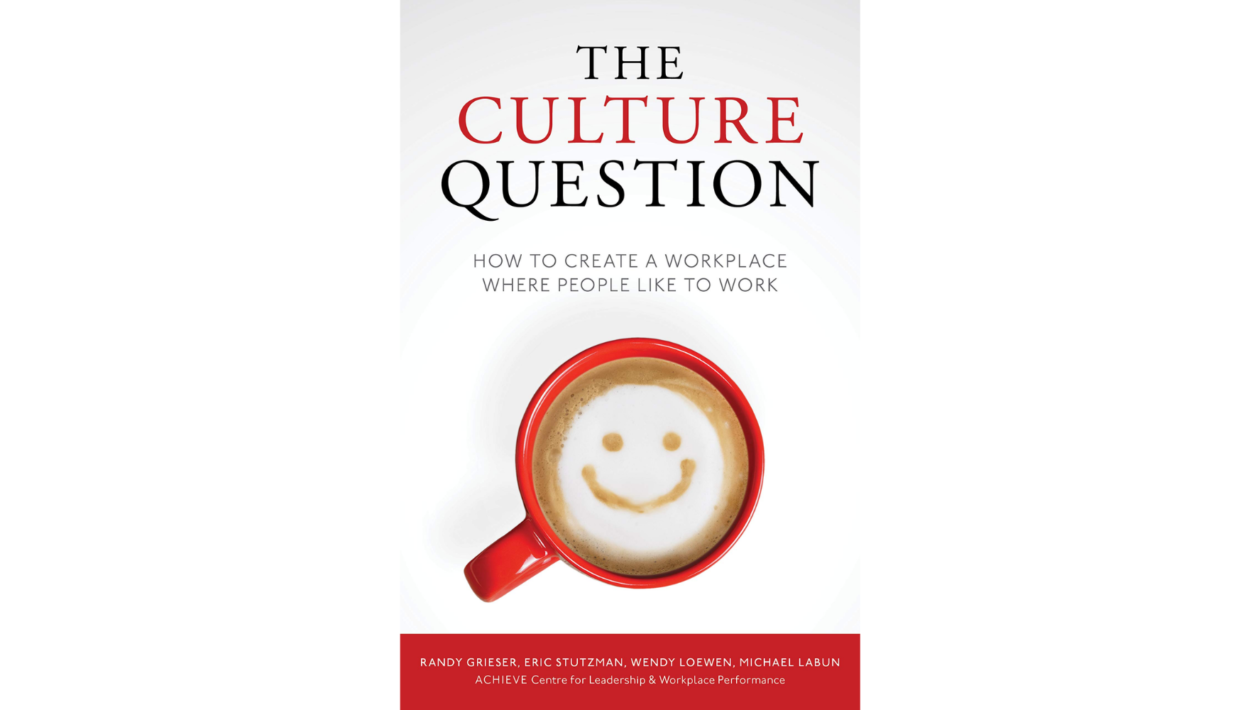By Randy Grieser, Eric Stutzman, Wendy Loewen, & Michael Labun Winnipeg, MB, Canada: Achieve Publishing (2019)
Kindle edition, 228 pages
Reviewed by ANDRE ANDERSON
In the book The Culture Question: How to Create a Workplace Where People Like to Work, the authors Randy Grieser, Eric Stutzman, Wendy Loewen, and Michael Labun have produced an excellent tool to help people create and change workplace culture. They suggest that leaders must inspire people to rally around purpose. This is the most important thing that employees must focus on. This book focuses on the importance of culture. Creating an environment where people become inspired doesn’t happen by accident. It occurs when workplaces are intentional.
The authors suggest environments where people feel a sense of fulfillment are created when people are organized based on their abilities. When people work in areas where their strengths are utilized, they will find their working experiences rewarding, stimulating, and worthwhile. In theory, I support what the authors are suggesting; however, there must be a balance. Personal fulfillment and bottom-line objectives are both important.
In the chapter “Focus Your Leadership Team on People,” the author insists that empowering leaders should promote collaborative decision-making information sharing and teamwork. In contrast, directive leadership uses one’s positional power to actively structure the work of subordinates and lay out expectations for their compliance. I struggled in this chapter because there are times where both autonomy and directives are necessary to accomplish the goal.
On page 73, the author suggests that one of the worst things any organization can do is have leaders who ignore problems. Since everything affects culture, I would argue that this issue may single-handedly be the most important thing that creates the right culture. In the moments where issues need to be addressed, leaders must create rules and boundaries that will facilitate perceived justice, becoming a part of how the organization operates.
In Chapter 6, the authors discussed peak-performing teams working towards one goal. This is crucial. After all, no two teams are ever alike because no two teams have the same leadership or chemistry. As long as the work is being completed based on the organizational expectations, how things are completed is not as important as the completed tasks. The impact of not allowing people and teams to have their own autonomy in the process may create an environment where healthy dissension is not encouraged. This is important because thriving environments don’t just happen when everyone adheres to the same process. However, healthy environments are created when team members feel as though they can disagree and still be valued.
Ultimately, creating an environment where people will want to come and work is a balancing act that takes intentionality. Without conflict resolution and consistent feedback and a willingness to deal with challenges head-on, most workplaces may never enjoy a healthy working environment. This author sees the need for consistent communication and the encouragement of a transparent environment.
What I appreciate most about this book is that it identifies how to identify what a healthy working environment looks like and lays out the framework for creating an environment that will thrive and create a healthy culture. This book clearly defines important steps to create a balanced environment where both the organizational needs are met and the employee’s feelings are considered. Too many organizations focus on the bottom-line objectives of the company. By doing so, they may miss an opportunity to create a working environment where people feel valued, and the objectives are also met.
ANDRE ANDERSON is the lead pastor of the Shiloh Seventh-day Adventist Church. He currently lives in Toronto, Ontario, Canada.

